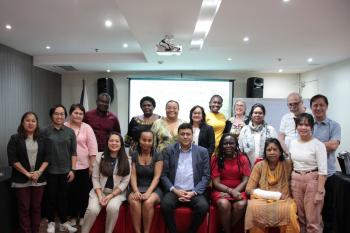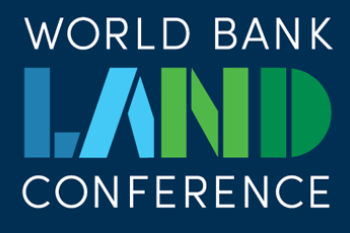Side event: Land Tenure Security Monitoring in the SDGs: Leaving no one behind
Land Tenure Security Monitoring in the SDGs: Leaving no one behind Joint Side Event by: UN-Habitat, World Bank and the Global Land Indicators Initiative in collaboration with the Global Donor Working Group on Land at the United Nations High Level Political Forum.
The UN-Habitat, World Bank and the Global Land Indicators Initiative (GLII) - hosted by Global Land Tool Network (GLTN), in collaboration with Global Donor Working Group on Land (GDWGL) are jointly hosting a side event titled Land Tenure Security Monitoring in the SDGs: Leaving no one behind at the United Nations High Level Political Forum HLPF 2017 in Newyork in support of its theme "Eradicating poverty and promoting prosperity in a changing world" and which gives in depth focus on Sustainable Development Goals (SDGs) 1, 2, 3, 5, 9, and 14. The HLPF is a platform for follow-up and review of the 2030 Agenda for Sustainable Development and the SDGs; and promote partnership to strengthen the means of implementation including land tenure security monitoring and reporting. he UN-Habitat, World Bank and the Global Land Indicators Initiative (GLII) - hosted by Global Land Tool Network (GLTN), in collaboration with Global Donor Working Group on Land (GDWGL) are jointly hosting a side event titled Land Tenure Security Monitoring in the SDGs: Leaving no one behind at the United Nations High Level Political Forum HLPF 2017 in Newyork in support of its theme "Eradicating poverty and promoting prosperity in a changing world" and which gives in depth focus on Sustainable Development Goals (SDGs) 1, 2, 3, 5, 9, and 14. The HLPF is a platform for follow-up and review of the 2030 Agenda for Sustainable Development and the SDGs; and promote partnership to strengthen the means of implementation including land tenure security monitoring and reporting. Secure tenure rights to land are strongly linked to several development goals including ending poverty, food security, women’s empowerment, urban development, peace and security; social cohesion, conservation of natural resources and mitigation of the negative impact of climate change. Effective national, regional and global land performance monitoring is central to enhancing changes in land governance that result in improved welfare and sustainable development opportunities for all, especially for women, poor and marginalized communities in rural and urban areas. Indicator 1.4.2 is an indicator proposed by stakeholders’ globally mobilizing communities, CSO countries and development partners. Within the SDGs, under SDG 1, Indicator 1.4.2 is dedicated towards measuring secure tenure rights to land, with UN-Habitat and the World Bank as co-custodian agencies. Specifically, the indicator aims to measure the ‘Proportion of total adult population with secure tenure rights to land, with legally recognized documentation and who perceive their rights to land as secure, by sex and by type of tenure’. Indicator 1.4.2 covers both rural and urban tenure and will build on the on-going work of the National Statistical Offices (NSOs), land and data agencies for comprehensive monitoring at country level. Custodian agencies (UN Habitat and World Bank) are working on the methodology through wider consultation with land experts, NSOs and other data agencies and stakeholders at country, regional and global level to secure re-classification of this indicator from Tier III to II by October 2017 and compile the data required for classification as Tier I by end of 2018.
The objective of this event is to:
- Create an interactive space for dialogue involving Member States of the United Nations, specialized agencies, and civil society on the contribution of land governance monitoring towards strengthening land tenure security
- Provide an update on the progress made in developing the methodology on indicator 1.4.2 .
- Discuss strategies for building effective partnerships for addressing the monitoring needs of this indicator and ensuring translating of results into meaningful policies for better land governance in support of eradicating poverty and promoting prosperity in a changing world.
Structure of the side event
This will be a two hour session organized with two tracks. The panelists will examine:- Relevance of land in ending poverty and Governments preparedness and support to land monitoring in the SDGs (panel 1);
- Technical approaches to monitoring and reporting on indicator 1.4.2 by governments and other agencies, a reflection on the proposed methodology (panel 2).


